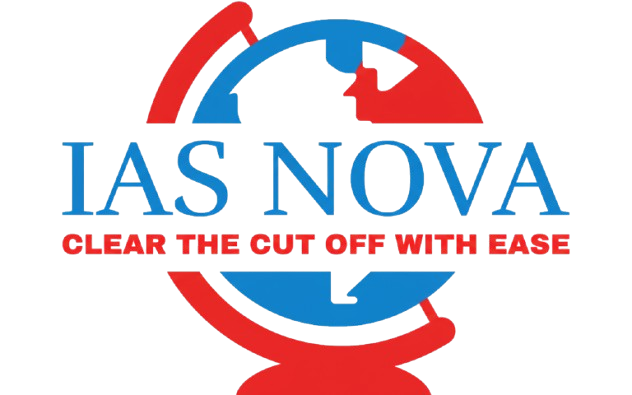Talcott Parsons is a key figure in classical sociological theory, known for his **Structural Functionalism** and highly abstract, integrated theoretical system. For UPSC aspirants, a comprehensive summary focuses on his core concepts: **Social Action, Social System, Pattern Variables, AGIL Scheme, and Social Change**.
1. The Theory of Social Action
Parsons’ initial work was the **”Voluntaristic Theory of Action,”** which attempts to integrate the positivist (Durkheim) and idealist (Weber) traditions.
- Social Action is the basic unit of analysis. It is a meaningful, goal-directed response to a situation, and it is regulated by norms and values.
- Unit Act: This is the analytical concept of action, comprising four elements:
- **Actor:** The person/collectivity performing the act.
- **End (Goal):** The objective towards which the action is directed.
- **Situation:** The environment (physical and social objects) where the action takes place.
- **Normative Orientation:** The social norms and values that regulate the means chosen to achieve the end.
2. The Social System and Functional Prerequisites
Parsons defines the **Social System** as a complex of patterned interactions between individuals. The fundamental unit is the **Status-Role Complex** (Status = position; Role = what the actor does). For a social system to survive, it must meet four basic functional needs, known as the **AGIL Scheme**.
Table 1: The AGIL Scheme
| Function | Acronym | Description | Corresponding Subsystem in Society |
|---|---|---|---|
| **Adaptation** | **A** | Relates the system to the environment; securing and distributing resources. | **Economy** (Production and allocation) |
| **Goal Attainment** | **G** | Defining and achieving primary system goals; mobilizing resources. | **Polity (Political System)** (Goal setting, mobilization) |
| **Integration** | **I** | Regulating the interrelationship of the component parts; managing conflict and ensuring cohesion. | **Societal Community** (Law, Judiciary, Social Norms) |
| **Latency** (Pattern Maintenance & Tension Management) | **L** | Maintaining the cultural values (norms) and renewing the motivation of individual actors. | **Fiduciary System** (Family, Education, Religion) |
3. Pattern Variables
Parsons uses **Pattern Variables** to describe the fundamental dilemmas or binary choices an actor faces in any social situation. They link the individual’s personality system to the social and cultural systems. These variables also act as a conceptual tool to differentiate between **Traditional** and **Modern** societies.
Table 2: Pattern Variables: Traditional vs. Modern Societies
| Pattern Variable Dilemma | Traditional Society (Ascribed Roles) | Modern Society (Achieved Roles) | Description of Choice |
|---|---|---|---|
| **Affectivity** vs **Affective Neutrality** | Affectivity (Emotional involvement) | Affective Neutrality (Emotional restraint/detachment) | Should the actor express emotion or be neutral? |
| **Self-Orientation** vs **Collectivity-Orientation** | Self-Orientation (Personal interest) | Collectivity-Orientation (Group/Societal interest) | Should the actor pursue personal interests or group interests? |
| **Particularism** vs **Universalism** | Particularism (Rules applied based on personal relationship/status) | Universalism (Rules applied equally to all based on abstract standards) | Should the actor apply general rules or treat the person as a special case? |
| **Ascription** vs **Achievement** | Ascription (Status based on inherited qualities: birth, age, caste) | Achievement (Status based on performance and effort) | Should the actor judge on ‘who’ the person is or ‘what’ the person does? |
| **Diffuseness** vs **Specificity** | Diffuseness (Unlimited scope of interaction/obligation) | Specificity (Narrow, clearly defined scope of interaction/obligation) | Is the relationship broad and open-ended (like family) or narrow and contractual (like a vendor)? |
4. Social Change: Differentiation and Evolutionary Universals
Parsons’ theory of change is **Evolutionary**, emphasizing **gradual, adaptive upgrading** rather than conflict.
Flowchart: Parsons’ Theory of Social Change
- **Structural Differentiation:** This is the core mechanism of change. One structure (e.g., the family) breaks down into two or more specialized structures (e.g., family and specialized school) to perform functions more effectively. This leads to increased adaptive capacity.
- **Adaptive Upgrading:** This involves greater **Value Generalization** (values become more abstract to cover diverse new roles) and **Inclusion** (previously excluded groups are brought into full societal participation), leading to a more complex and efficient system.
- **Evolutionary Universals:** Parsons identifies crucial innovations that, once achieved, establish a system at a permanently higher level of evolutionary development, such as:
- Social Stratification
- Cultural Legitimation (a set of beliefs justifying the system)
- Bureaucratic Organization
- Money and Market Systems
- Generalized Universalistic Norms (e.g., a formal legal system)
- Democratic Association
Conclusion (For Quick Revision)
| Core Concept | Key Takeaway (Parsons’ Focus) |
|---|---|
| **Social Action** | Voluntaristic, Goal-oriented, and Normatively Regulated. |
| **Social System** | Interconnected parts (statuses/roles) seeking equilibrium. |
| **AGIL Scheme** | Four functional imperatives for system survival (**A**daptation, **G**oal, **I**ntegration, **L**atency). |
| **Pattern Variables** | Dichotomous choices (dilemmas) linking actor to the social system; tool for comparing traditional (Particularism, Ascription) and modern (Universalism, Achievement) societies. |
| **Social Change** | Evolutionary process of **Structural Differentiation** and **Adaptive Upgrading** leading to higher levels of complexity and efficiency. |
